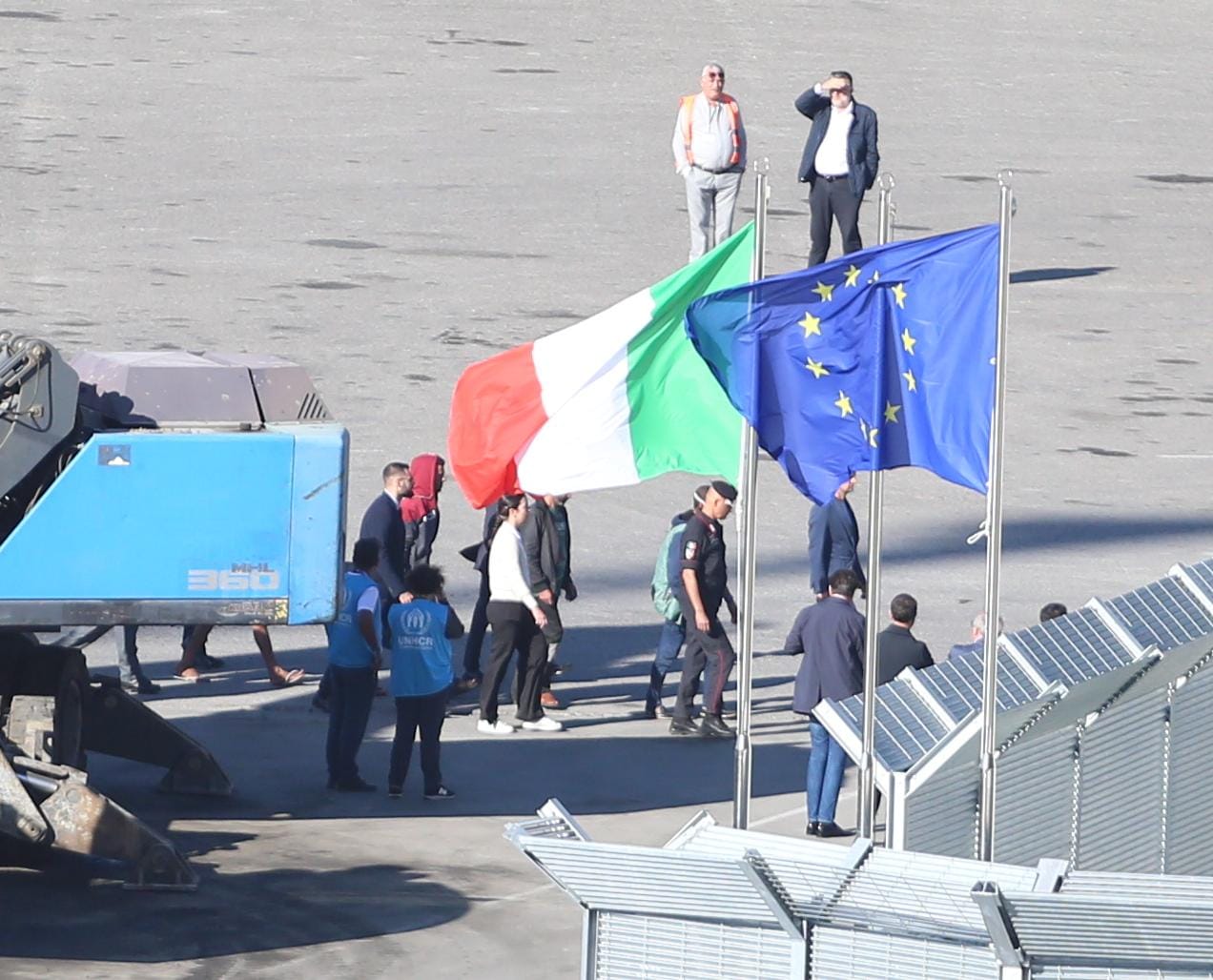First asylum seekers arrive at Gjadër Camp under Italy-Albania agreement

The first group of 16 asylum seekers, set to be housed at the Gjadër camp, arrived this Wednesday morning at the port of Shëngjin. At 8 AM, the Italian military ship Libradocked at the northern Albanian port with 10 migrants from Bangladesh and six from Egypt on board, all of whom had departed from Libya in an attempt to reach Italy.
Why is this important: The arrival of the 16 migrants marks the start of the implementation of the agreement signed on November 6 between Albanian Prime Minister Edi Rama and Italian Prime Minister Giorgia Meloni. Under the five-year agreement, third-country asylum seekers will be transferred to the Gjadër camp, built by the Italian government. According to the agreement, only men from safe countries of origin will be housed in the camp. Italy currently classifies 21 countries as safe, including Bangladesh, Egypt, Ivory Coast, and Tunisia—countries that collectively sent over 56,000 migrants to Italy last year.
Context: Upon arrival at Shëngjin, the migrants underwent registration and preliminary procedures managed by Italian authorities. These procedures include data collection, document verification, and health screenings, and they take approximately eight hours. Following the process, the asylum seekers were transferred to the Gjadër camp, where they will stay for the next 30 days while awaiting Italy’s decision on their asylum applications. If their requests are denied, the Italian Government will handle their repatriation to their countries of origin.
The Italy-Albania agreement initially sparked controversy in both countries and within the European Union. In Albania the opposition has been sporadic and motivated more by hostility to the Government than by any issues with the agreement. In Europe the initial reaction was quite hostile. However, the arrangement has recently gained traction as other European countries have publicly expressed that they are observing its implementation and could consider adopting similar models. This week, Ursula von der Leyen, President of the European Commission, praised the agreement as a success and encouraged other EU countries to explore setting up asylum processing centers outside the EU’s borders.


